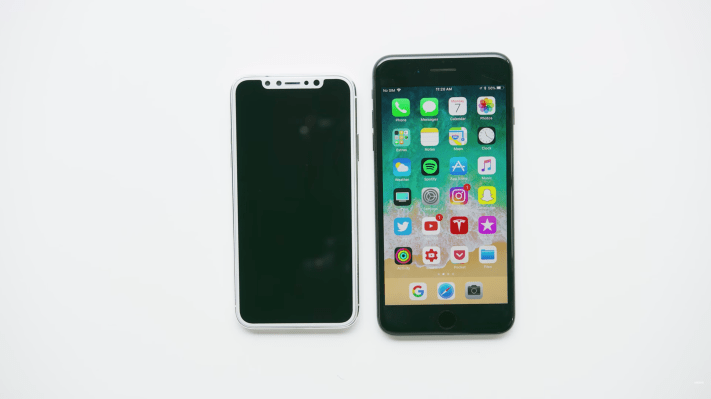Apple is about to unveil a brand new iPhone on September 12. For the first time, the company is likely going to switch from LCD displays to OLED displays, a newer technology that is causing some challenges. In particular, according to a new report from KGI Securities and obtained by Apple Insider, Samsung is going to be the sole supplier. Samsung is taking advantage of that by charging a ton of money for those displays.
KGI Securities’ analyst Ming-Chi Kuo estimates that Apple is paying $45 to $55 for LCD displays in current iPhone models. But Samsung is asking for $120 and $130 per unit. This could be the reason why the next high-end iPhone is going to be so expensive.
There are a few reasons why Apple has no choice but to pay a small fortune. First, Apple needs OLED displays more than ever before. Rumor has it that the next iPhone is going to feature a taller screen that is going to nearly fill the front of the device. Think of it as an iPhone 7-shaped device, but with a screen that expands toward the top and bottom edge of the device.
It’s like having an iPhone 7 Plus display in an iPhone 7 body. But the issue is that Apple will have to deal with a small-ish battery for quite a big display. Among other things, OLED displays are more energy-efficient. That’s why Apple can compensate the bigger display with OLED technology.
While many Android manufacturers have used OLED displays for years, Apple faces some interesting scaling issues. The company is currently selling over 200 million iPhones every year.
Shipping hundreds of millions of devices creates some incredible supply chain issues. Apple can’t adopt the latest and newest components if it can’t get hundreds of millions components every year. A single component shortage could create a bottleneck for the entire production. Designing the iPhone is already quite impressive, but being able to ship so many iPhones is even more impressive.
Right now, the only OLED supplier that can help Apple is Samsung. LG also manufactures OLED displays, but Bloomberg just reported that Apple will have to wait until 2019 to get LG displays. LG’s current OLED displays are also nowhere near as good as Samsung’s displays — just look at this Ars Technica comparison.
That’s how you end up with a classic case of asynchronous competition. Samsung and Apple are competing like crazy to sell more smartphones around the world. But Samsung is also an important supplier. Apple has to pay Samsung for those sweet, sweet OLED displays.
